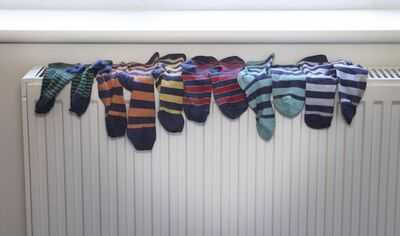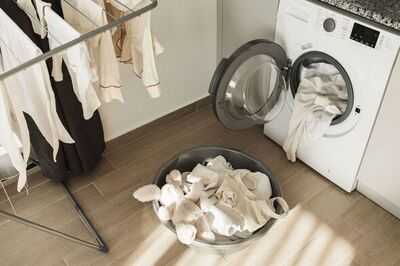We've all been there on a rainy day or chilly winter evening, when the easiest solution seems to be draping damp clothes over a radiator or indoor drying rack. But experts are warning that this common household shortcut could have serious consequences for your health. While drying clothes indoors might feel convenient, and help avoid high electricity bills, it can create the perfect conditions for harmful bacteria, mould, and dust mites to thrive.
The NHS reportedly spends around £1.4 billion annually treating illnesses linked to cold or damp housing. Recent research shows that 60% of UK residents have experienced mould in their homes, and for nearly a third, it remains an ongoing problem. Of those affected, 22% reported health issues, while 37% said mould had forced them to leave their homes.

Jason Instrell, Industry Lead at SFG20, a standard for building maintenance, said: "Mould in the home is not always visible. It can develop in hidden areas such as behind furniture, inside walls, or under flooring, where moisture accumulates.
"Early signs include a musty odour, condensation on windows or walls, and discolouration on surfaces. Increased allergy-like symptoms among occupants can also indicate mould growth."
He added: "Drying clothes indoors, particularly over radiators, releases significant moisture into the air, increasing indoor humidity and creating the ideal environment for mould.
"This can lead to condensation on walls and ceilings, promoting damp conditions that encourage mould spores to thrive. To reduce this risk, it's best to use a well-ventilated drying area, a dehumidifier, or a tumble dryer."
For many households, drying indoors may feel unavoidable, especially during colder months. Chloe Blanchfield, Product Marketing Manager at Hisense, shared expert advice on safer drying methods.
"A tumble dryer is one of the most effective ways to dry clothes indoors while minimising mould growth, as it removes moisture rather than releasing it into the air.
"If a tumble dryer isn't an option, place drying racks in well-ventilated areas, ideally near a window, and avoid sealed or poorly ventilated rooms. Using a fan to circulate air or a dehumidifier can also help reduce moisture and the risk of mould."
Blanchfield added: "While energy-efficient tumble dryers may have a higher upfront cost, they provide a safer, more effective way to dry clothes without compromising your health or the integrity of your home."
You may also like

Trump threatens Canada with additional 10 pc import tax over not removing anti-tariff ad soon

"Callousness of ruling government": BRS' Dasoju Sravan on Kurnool bus accident

Politics cannot be done by force or communal provocation, says Tripura CM Manik Saha

Jitan Ram Manjhi hails Nitish Kumar, confident of NDA victory ahead of Bihar Polls

MrBeast rescues over 1,000 animals across continents in latest YouTube video







